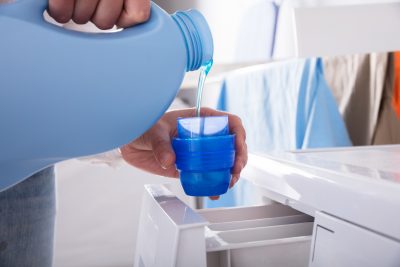It is 2am. I can see the clock behind the bed head of my crying 2-year-old. “What’s wrong?” I ask.
No answer. Up he crawls into my bed where he sleeps for an hour tossing and turning and kicking (me).
It is 3am. He sits up whining. Looks at me with his deer-in-the-headlights gaze of fear. “Oh, NO!” I think grabbing for something, anything! I have seen that look only once before. I grab his favorite blanket which also came into “Mommy’s” bed. “Sorry blanket, you are easier to wash then the white comforter.” I think, “Why did I go with white?” And there it is. Yesterday’s dinner… or lunch… or even breakfast?
Great. Of course the fun doesn’t end there. The vomiting continues for several hours. My son likes to cry and run when he is going to vomit. He won’t stay still. He must think he can wiggle away from it. No such luck.
 Stomach Flu, also known as gastroenteritis, is the most common cause of vomiting and diarrhea .It can come at any time of year. It is always miserable, highly contagious, and downright disgusting.
Stomach Flu, also known as gastroenteritis, is the most common cause of vomiting and diarrhea .It can come at any time of year. It is always miserable, highly contagious, and downright disgusting.
Nausea and vomiting are often the first symptoms and they can hit fast and furiously. The vomiting is often frequent and persistent for the first day or so with many kids vomiting multiple times an hour. That hurts. It takes a lot of muscle and energy to empty your stomach backwards. Often the bowels will slow down their normal digestion before you notice your child is ill so yesterday’s food comes back to haunt you.
Later, the diarrhea usually sets in complete with belly pain that comes in waves and fevers. Some kids will have all of these symptoms, while others will have only parts of the illness.
Older children and adults may have the “24-hour flu” which is usually due to the fact that their immune system has seen a similar virus in the past and they fight it off quickly. Young children may have longer or more severe illness.
Helpless pretty much sums up the way that most parents feel when they have a child with these symptoms. Thankfully, most kids will improve over the course of a day at least enough to start drinking and keep themselves hydrated. Hydration is the key. Dehydration makes you more nauseated and feel worse overall.
Things to consider:
1) Let your kids drink whatever they want (within reason). Water and Pedialyte type solutions are preferred but some amount of juice, soda, popsicles, Jello or other clear liquids will all get the job done. Pedialyte is most important for children with lots of diarrhea, who are very young ( less than one year), or are not able to eat any solid foods (saltine crackers etc.). Milk and formula can be great, too, unless they make the vomiting worse. Warning: they do smell worse then water coming back out. My son only wanted to drink warm tea with milk and sugar. I used white tea to cut the caffeine, but regular tea would still work. Be creative. Often you can entice them with something.
2) Don’t wait until the vomiting is completely gone to make your child drink. Even if they continue to vomit, some of the moisture they take in will get absorbed. We go by the “you vomit, you drink” rule. Don’t hold back on the fluids.
3) Drinking is not a choice. Insist and be consistent. Be mean. “Baby” them in other ways, but this is a must. I promise an IV is a much less desirable choice for most kids.
4) Small amounts are your friend. Filling a medication syringe or spoon or popsicles etc. allow your child to take in fluids but at a slow rate. These are labor intensive methods but worth saving yourself a dehydrated child and a trip to the ER.
5) If your child does not have diarrhea keep an extra close eye on them. There are other reasons for vomiting, some serious and some not. If they have a severe headache, strange rash, severe belly pain or other unusual symptom call your doctor or nurse line to discuss.
6) Signs of significant dehydration include dry mouth, no tears, no urine for more than 8 hours and by none I mean none! All kids will have less urine during an illness like this.
7) If the vomiting is more then you think you and your child can handle there are medications that can help, but require prescription. They are often used in ERs for more severe cases but in some situations your primary doctor may be able to prescribe them for you when appropriate. The most common nausea drug is known as Zofran.
8) WASH YOUR HANDS and sanitize the bathroom handles (sink toilet etc.). These viruses are very contagious and can take 1-4 days to show symptoms in their next victim. People remain contagious for several days or even longer.
My son, my bed spread, and I all survived. I am not looking forward to next time. I am sure it will come, but for now I will live with the naïve thought that this was my last encounter with “yesterday’s lunch.”





Just went through this ourselves this week. Great advice – staying hydrated is tough when it’s coming out both ends.
Some naturopathic tips that work well in my office:
Small sips of chamomile/spearmint tea can help calm the nausea and work just as well as Gatorade.
A teaspoon of carob powder in some applesauce will slow most diarrhea after it has passed the initial acute phase.
I always recommend taking a break from all (cow) dairy products for a few days to a few weeks after a bout of the stomach flu. Most adults and many kids will get a transient lactase deficiency as a result of the damage the pathogen does to the brush border. Hold off on that cheese pizza!